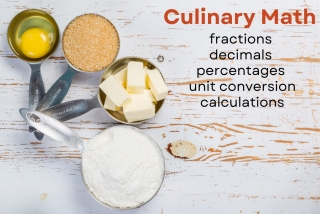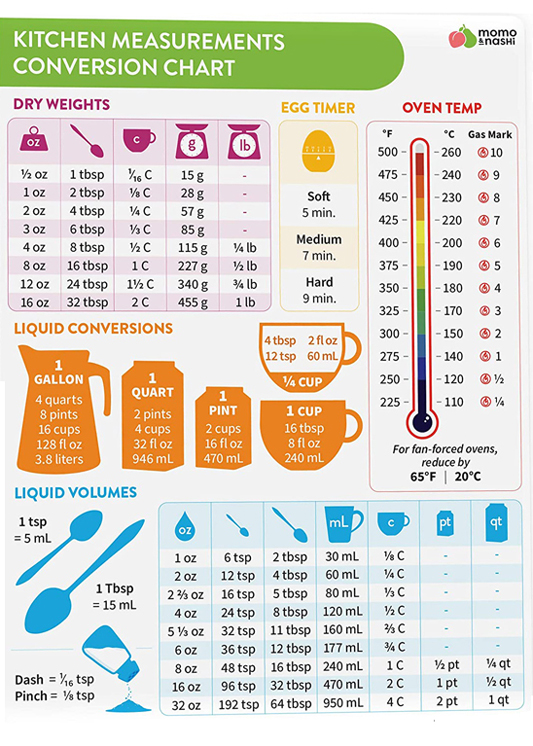
Culinary Math Teaching Series: Basic Unit Conversion
27 February 2023Not all fluids measure eight ounces in one cup. Understanding a sense of weight and the difference between fluid ounces and ounces.
By Linda Blocker, Associate Professor at the State University of New York at Delhi
Feedback & comments: This email address is being protected from spambots. You need JavaScript enabled to view it.
I shared insight last month on teaching how to convert units within weight and volume. This month we will explore teaching conversion between weight and volume. Specifically, I will dive into the difficulties students have converting fluid ounces (volume) and ounces (weight).
Conversion, in general, is challenging for many students. However, one of the most challenging aspects of conversion is the existence of fluid ounces. If I earned a dollar every time a student incorrectly solved a conversion problem using the idea that one cup = eight ounces, NO MATTER WHAT INGREDIENT IS IN THE CUP, let’s just say I would be vacationing on my yacht in the Caribbean.
Students shake their heads in agreement with my comment that “a cup of water weighs eight ounces and is the standard for fluid ounces.” I explain ingredients that pour like water, such as vinegar, apple juice, etc., also weigh eight ounces when measured in a cup. They understand this idea.
Next, I ask if they think a cup of AP flour weighs eight ounces. They wholeheartedly shake their head to indicate no. At that moment, they get it! Every time this happens, it feels like a great teaching moment (cue the inspirational music). Then we move onto recipe costing where they are faced with finding the cost of 3 cups of AP flour. They use the Bridge Method to convert cups to pounds since flour is purchased by the pound. However, many will insert eight ounces for the weight even though they were taught in introductory classes that one cup of AP flour weighs four ounces. Sadly, it is a default setting with which even a good lesson cannot compete, which is frustrating for an educator.
What are we up against with this weight/volume confusion? Many students have grown up seeing kitchen conversion chart magnets and other similar items in their homes or at their fingertips online. Here is an example I found on Amazon. While there is excellent information on this chart, there is also incorrect information that misleads students.
In the top left Dry Weights chart, you will see one cup weighs eight ounces and one tablespoon weighs ½ ounce! To be fair, there are many accurate kitchen magnets out there. Unfortunately, ones like this are far too common and teach the error that makes calculations incorrect.

Understanding the difference between fluid ounces and ounces is a considerable part of what students must grasp to successfully convert between weight and volume. I show students examples in “The Book of Yields” by Francis Lynch and the Approximate Volume to Weight chart found in our culinary math textbook.
In a kitchen setting, I recommend having your students predict the weight of different ingredients before you weigh them or have them use the scale to determine the weight. I encourage them to think of water – which they already know the weight of – as a context for their predictions during this activity. The most effective weapon against this common misunderstanding is developing their ingredient weight sense by having them experience and practice the measuring and the math – a lot.
Next month, I will dive into the steps and best practices for teaching advanced unit conversion between weight and volume measures.
